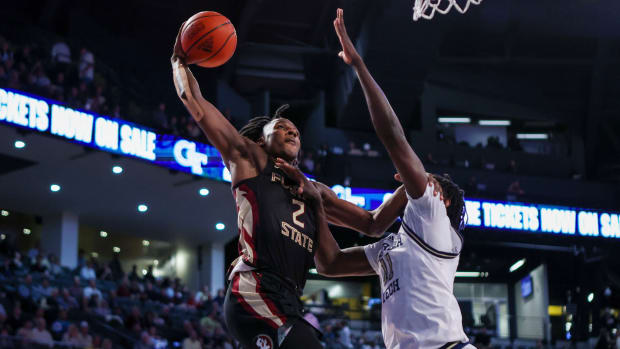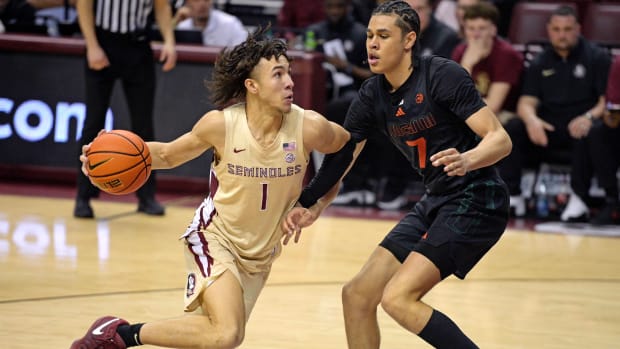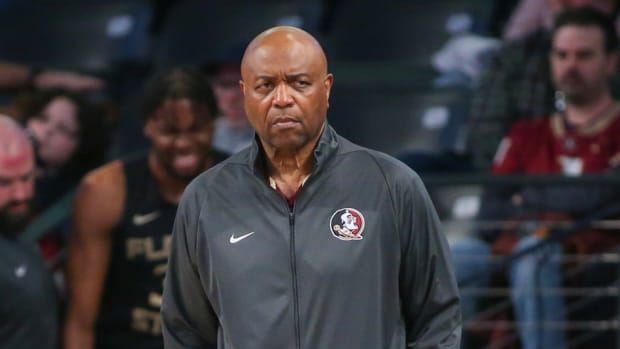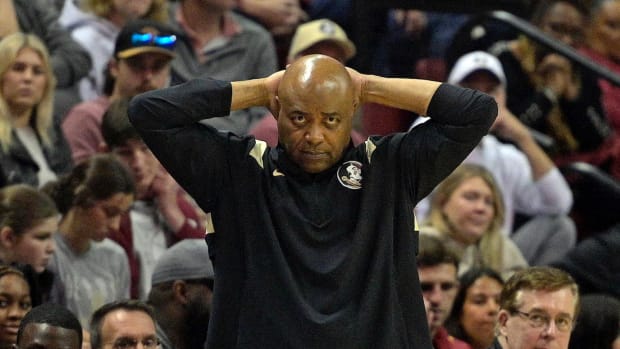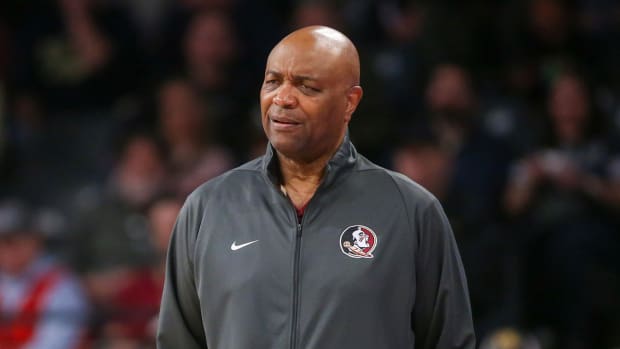FSU Basketball: The History of the Power Forward Position
Even the most casual fan can usually look at a basketball team in action and pick out the center and point guard. It takes some seasoning to identify the roles of the other three players, as their roles often overlap and even change when substitutions alter the personnel on the court. Traditionally, power forwards typically played near the basket and had responsibilities similar to, and complementary to, the center.
But the game has evolved, and many power forwards today are known as “stretch 4s,” because they're capable of making shots out to the three-point line and force the defense to stretch to defend a player who was previously within 12 feet of the basket. Let's look at how the position has progressed for FSU basketball.
History
Florida State has been strong at the power forward position for a very long time now. In many years, the Seminoles have been exceptional.
The first player of note is Willie Williams. He played two seasons, from '68 through '70 and was everything you wanted in a power forward. At 6'7 and 200 pounds, he was small by today's standards, but ideal for that era. He was quicker than most players his size, talented, and technically sound. His senior year statistics were an impressive 17 points and 11 rebounds per game, numbers that every team would like from a single player even today.
The Succession
Reggie Royals played from '70-'73 and was perhaps the best of them all. At 6'10, 200, with real basketball skills, he could dominate games-- he averaged a ridiculous 18 points and 15 rebounds his first year on the team, had 51 career double-doubles, and one of only three triple-doubles in school history. Royals would be the prototypical stretch 4 even today, as his jump shot was effective past 20 feet. With 1,006 career rebounds and 1,406 points, he still ranks second in rebounds and 14th in points on FSU's all-time list, nearly 50 years after his last game.
Zach Perkins, Harry Davis, Murray Brown, and Kris Anderson were all 6'7 - 6'8 and filled the position over the next six years. All were capable and have interesting side stories. Perkins was a two-sport star, the first since Dave Cowens (both participated in track & field as well as basketball).
Davis, generously listed at 6'7, was forced to play center. He was surprisingly good at it and made you wish he'd have grown to 6'11. Brown earned the nickname “Mule” for his physical play and averaged 22 & 8 as a junior. Anderson was one of FSU's smartest players, majoring in computer science, and once finessed his way out of a technical foul with a shoulder shrug.
Randy Allen's respectable career scoring and rebounding numbers (21.5 and 6.4) don't reveal his game's up and down nature. He'd score 13 between games of 6 & 0, or have a monster 22 & 14 game between 12 & 5 and 4 & 1 games. Still, he was one of the three best players on those mid 80s teams. He grew up in the Florida panhandle and became something of a hometown favorite.
Tony Dawson transferred to FSU in '87 and had an immediate impact, averaging almost 18 points a game his first year. At 6'7, he was one of the quickest players on a team on which everyone on the roster was between 6'2 and 6'9.
The 6'9 Rodney Dobard makes this list for being the most prolific shot blocker in school history. His 111 blocked shots his senior year ('93) and 240 for a career are records that still stand. Dobard played both the 4 and 5, sharing time with Andre Reid and Doug Edwards.
Doug Edwards arrived at FSU in '90 and became a nearly unstoppable force 20 years after Royals did the same. In only 3 years, the 6'9 Edwards wrote his name all over the records books, ranking sixth in games started, career scoring, and career rebounds. His 18 double-doubles is tied for seventh all time. He did all of his damage near the paint, as he averaged barely one three-point attempt per game.
Randell Jackson appeared to be the next great power forward for the Seminoles. At 6'11, 210, he was long and lean, a good jumper, and surprisingly athletic. He was easily the teams' best big man while he was here, though his statistics were somewhat modest. Jackson left before his senior season, coinciding with a head coaching change, and entered the NBA as an undrafted free agent.
Bernard James, affectionately known as “Sarge," was a two-year player beginning in 2010. His 10 points and 7 rebounds seem somewhat work-a-day, but his 2.5 blocks and one steal per game made him such an important player that he dominated playing time on a team that also had Chris Singleton and Okaro White at power forward. He quickly gained the reputation as a shot blocker and had a huge impact whenever he was on the floor.
Jonathan Isaac, at 6'10 and 210 pounds makes the list even though he played only one year. Somewhat quiet on the court and seemingly without ego, he filled the role the coaches gave him, allowing other players to shine. Few that saw him play can't muster up an image of him rising up over the rim to block an opponent's dunk attempt.
Mfiondu Kabengele wraps up our list of power forwards. Fi, as he was known to many, played only two years. The '18-'19 team was filled with players who have or will go on to play professionally, yet Fi stood out for his hustle and athleticism. He was a first-round selection in last year's NBA draft.
Up Next
Two current Seminoles, RaiQuan Gray and Malik Osborne, played most of the power forward minutes last year and will likely do so again next year. The team style makes it difficult to label players by traditional position, but the tallest and strongest of the wings get the lions share of physical play, so for our purposes they play the 4.
The Future
Scottie Barnes, a 6'8 high school power forward is signed to play for Florida State next year. The highest ranked signee in FSU hoops history (just ahead of Isaac), the No. 6 national recruit has excellent ball handling skills and an interest in playing point guard. Look for him to be all over the court as his game and body type scream power forward, but his skills and the graduation of Trent Forrest suggest he may get considerable time as the primary ball handler.
FSU is recruiting Moussa Cisse and Michael Foster for the 2021 class. Both are top-10 recruits at power forward. It's too early to tell if they can land either one, but that's still recruiting at a really high level.
2023 is shaping up to be a very interesting recruiting class. FSU has offered Ryan and Matt Bewley, 16-year-old, 6'9 twins from Fort Lauderdale who will definitely play D-1 ball if they choose. This early there are more questions than answers, but the most intriguing questions right now is are they done growing? As power forwards, would they want to compete for the same playing time or would they alternate between the 3, 4, and 5? If they grow three or more inches, would the pair convert to centers and want to compete for the same playing time at center? Stay tuned-- only time will tell.
In the meantime, if you missed our opening piece in this series, on the center position in Florida State hoops history, be sure to check it out here.

